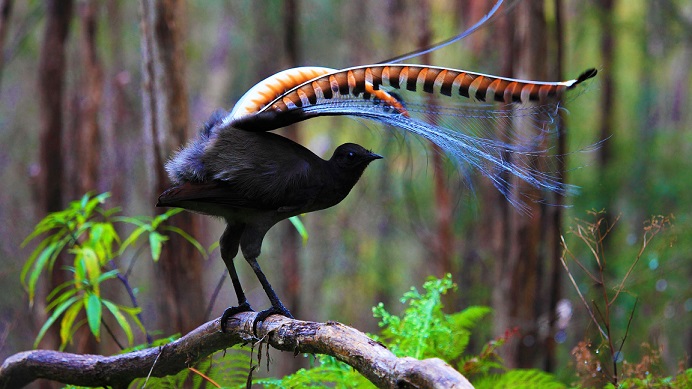
Lyrebird has learned to imitate baby crying very convincingly (VIDEO)
(ORDO NEWS) — The Sydney Taronga Lyrebird mimics loud baby crying very convincingly.
About a year ago, a male named Echo borrowed this sound from young zoo visitors and has since perfected the imitation. He is especially good at screaming. As noted by The Guardian, in addition to crying children, the lyrebird can portray an electric drill and a fire alarm signaling an evacuation.
Many birds skillfully imitate various sounds, such as the songs of other birds and human speech. However, few of them can match the lyrebirds (Menura). Trying to attract a female, male lyrebirds perform a mating song, which includes the voices of dozens of species of birds and some mammals, as well as other natural noises.
In addition, the repertoire of the magnificent lyrebirds (M. novaehollandiae) includes the so-called D-song, reminiscent of the cries of an alarmed flock of small passerines. The male resorts to her if the potential partner remains indifferent to his singing and dancing and is about to leave the demonstration area. Having heard the imitation of alarm signals, the female remains in place, allowing the male to mate with her. The male also sings the D-song during mating: this way he ensures that the partner does not interrupt copulation and does not run away.
Some lyrebirds are not limited to natural sounds and include perfect imitations of chainsaw roars, camera shutters and other noises of human origin in their mating song. True, contrary to popular claims, reliable evidence of such behavior, including all known videos, refers only to individuals living in captivity. Whether wild lyrebirds mimic anthropogenic noise is still unknown. If they do it, it is very rare, experts believe (interestingly, some innate signals of lyrebirds have a “mechanical” sound, so that they can be mistaken for imitation of the noise of technology).
One of the common lyrebirds, who have learned to imitate the sounds of human origin, lives in the Taronga Zoo in Sydney. The seven-year-old male of the magnificent lyrebird, which has received the very apt name Echo, has chosen an extremely unusual role model: a crying baby. About a year ago, the bird began to copy the loud crying of children that it almost certainly heard from several young zoo visitors. What exactly attracted her to this sound is unclear. Over the following months, the zoo was periodically closed due to the coronavirus pandemic - and Echo took the time to hone his imitation of crying. Now she is almost perfect. The lyrebird is especially good at children’s screams.
Echo has also learned to simulate the noise of an electric drill and a fire alarm (including an “Evacuate immediately!” Announcement). However, imitation of a crying baby remains the most unpleasant sound in the lyrebird’s repertoire. According to Leanne Golebiowski, who runs Taronga’s bird department, Echo’s tendency to imitate crying spoils the idyllic atmosphere of the zoo.
Young songbirds learn singing skills by imitating their adult relatives. However, juvenile warty honey suckers (Anthochaera Phrygia) have serious difficulties finding teachers. The fact is that due to human fault, the wild population of this species has decreased to 200-400 oboe living in a vast territory in Eastern Australia. As a result, due to a shortage of role models, honey suckers are increasingly performing a highly shortened version of a species-specific song or mimicking the voices of other birds. Females are reluctant to mate with such individuals, which negatively affects the reproduction of an endangered species.
—
Online:
Contact us: [email protected]
Our Standards, Terms of Use: Standard Terms And Conditions.





